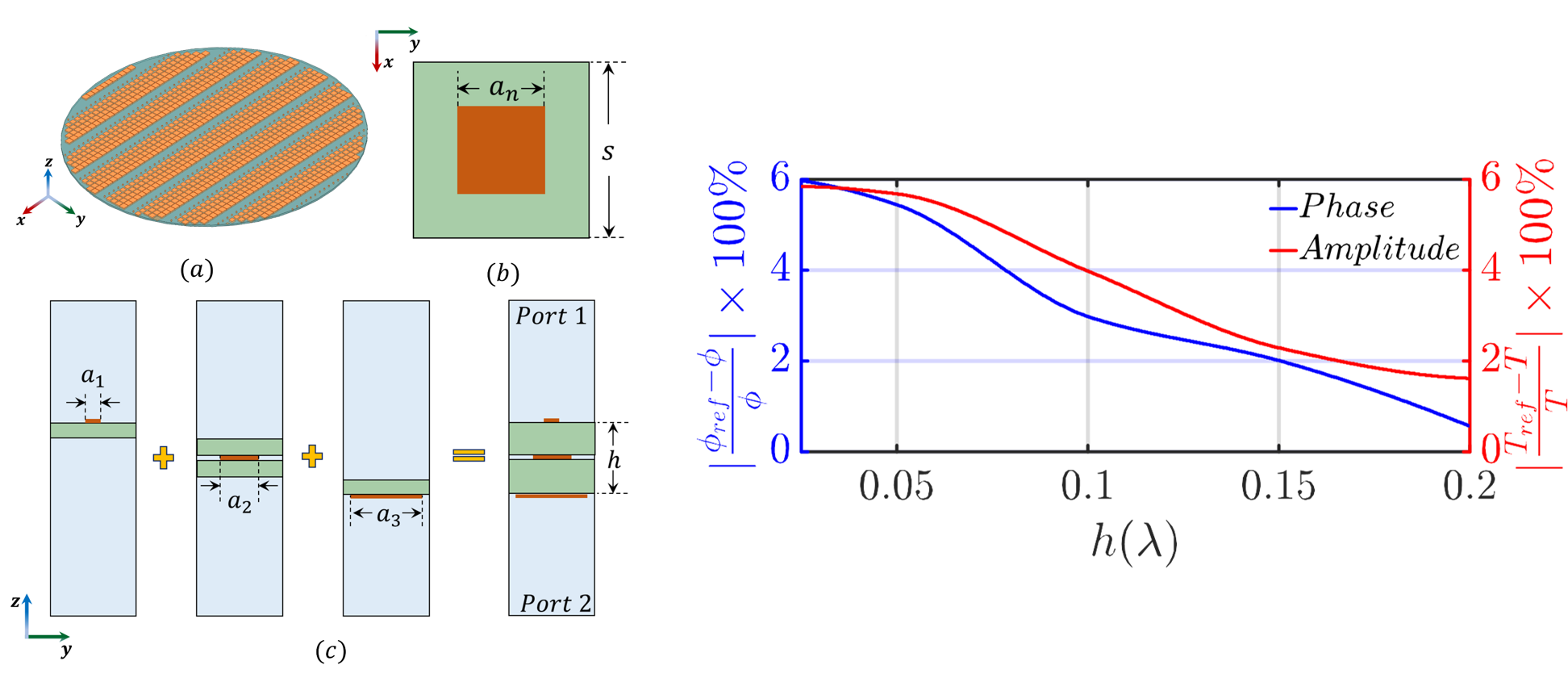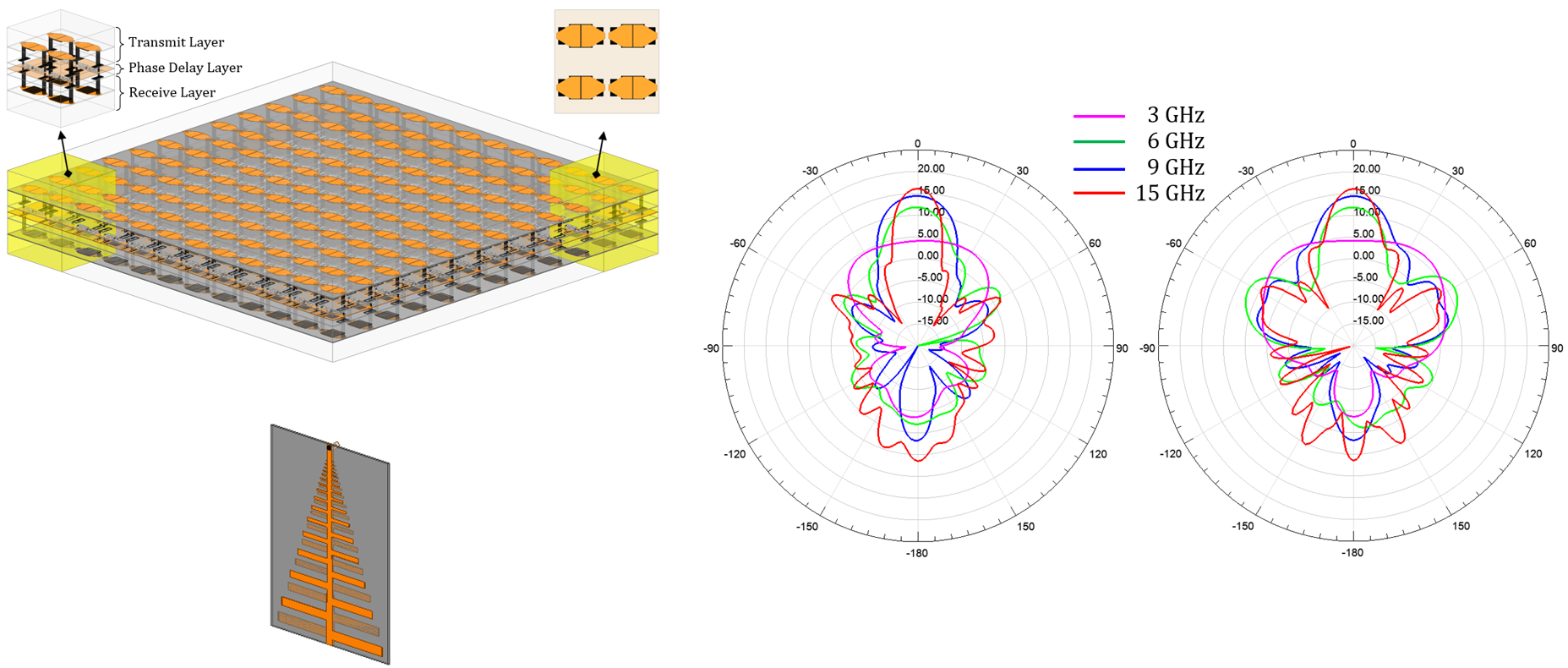
In this work, we present a method that enables the ultra-fast design of phase shifting surfaces (PSS) for various antenna applications. Traditional design approaches utilize full-wave simulations that are extremely time-consuming and computationally expensive. Our approach uses the multiplication property of ABCD parameters of cascaded networks to design N-layer PSSs, which consist of M different variations of conductive patches. Following the proposed approach for designing an N-layer PSS, we only need to perform N×M full-wave simulations instead of N^M simulations, which must be performed when the traditional approach is used. Our method’s accuracy is studied and validated; specifically, it exhibits a total percentage error of less than 6% for both amplitude and phase.

A planar ultra-wideband transmitarray of tightly coupled dipoles based on a novel modular unit-cell is proposed. Specifically, modularity is achieved by using capacitive coupling to connect the dipoles with the true-time-delay lines. Therefore, this modular design does not require physical connection between the receive/transmit dipole-layers and the true-time-delay lines, thereby enabling the realization of the first (to our knowledge) planar ultra-wideband transmitarray. Also, our design reduces significantly the fabrication cost of ultra-wideband transmitarrays. As a proof-of-concept, a 12×12 element transmitarray is designed for broadside operation, and provides a 5:1 frequency bandwidth with an active VSWR < 3 from 3 to 15 GHz.

Full dimensional mm-Wave beamforming is essential for the successful deployment of 5G. Towards this end, in this work, a fully planar true-time-delay multibeam network based on the Blass matrix topology, is presented, as an alternative to bulky lens-based beamformers. To our knowledge, this is the first planar true-time-delay 2D beamformer. As a proof of concept a 2×2 Blass matrix design is designed to operate at 24-31 GHz bandwidth. Our proposed design has a footprint of 4.5 λ_0 × 3.6 λ_0, whereas state-of-the-art true-time-delay 2D beamformers occupy space of 14 λ_0 × 4 λ_0 × 4 λ_0 .

